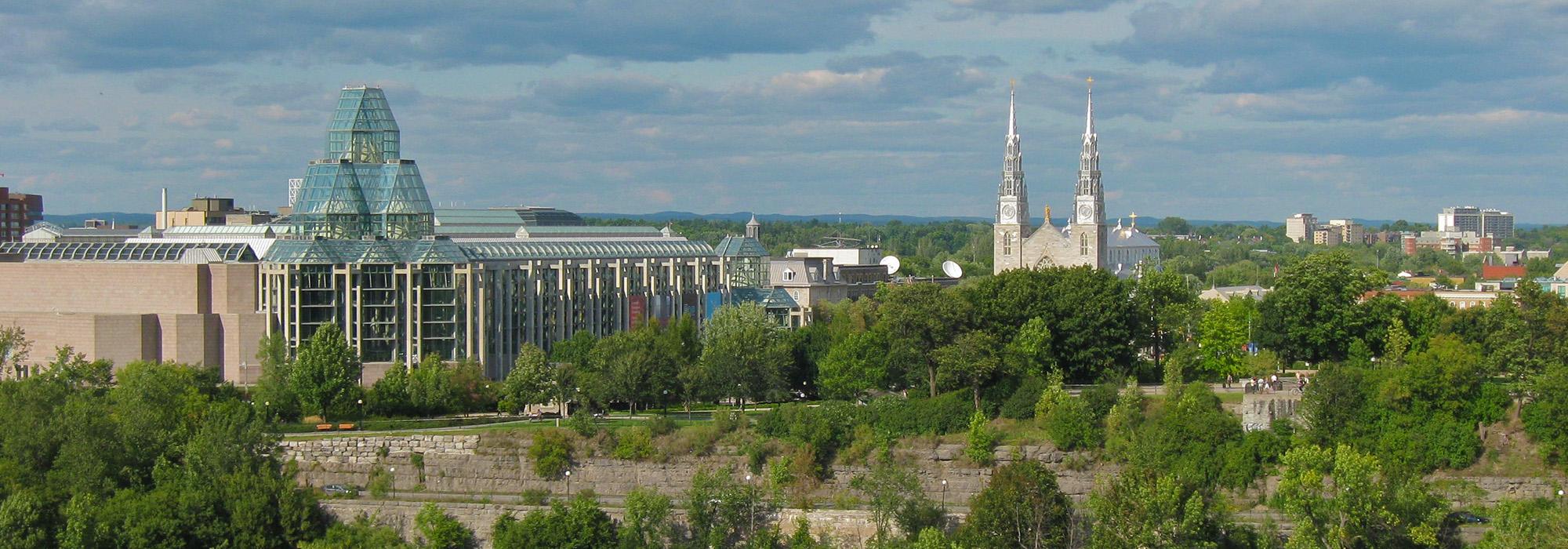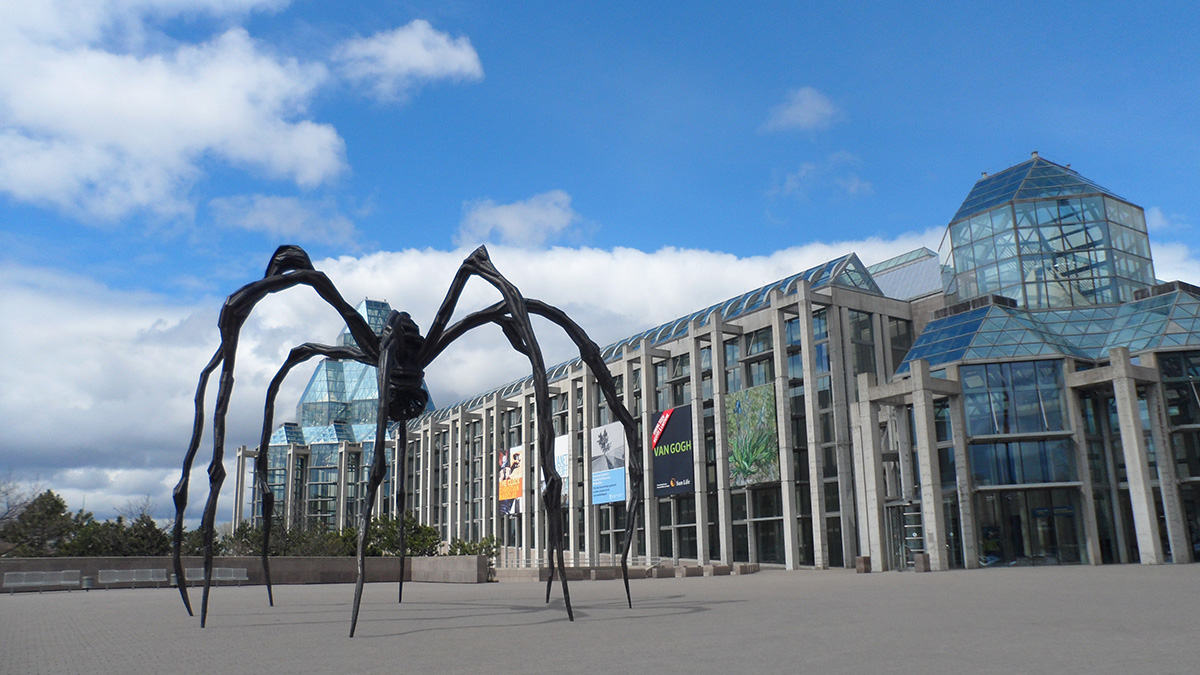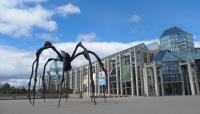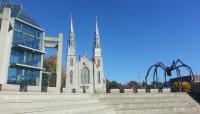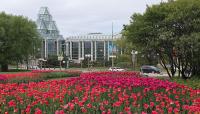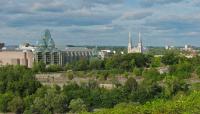Landscape Information
Located on Nepean Point above the Ottawa River, the National Gallery of Canada opened in 1988. The museum, by Moshe Safdie with grounds designed by Cornelia Hahn Oberlander, was built at a time when the Canadian government aimed to transform its capital into a cultural center. Inspired by the Canadian landscape and twentieth-century art, Oberlander designed four major spaces for the gallery: an entrance garden, a grove, an allée, and a courtyard.
Framing the gallery’s main entrance, mugo pines, shrubby tundra plantings, and stone excavated during construction fill the Taiga Garden. Informed by paintings of the conifer-dominated taiga in subarctic Canada, particularly Alexander Young Jackson’s Terre Sauvage, Oberlander intended the rugged terrain to be explored freely rather than via pathways. Farther north, along the building’s Sussex Drive façade, staircases descend into a minimalist sunken garden containing a grove of twelve crabapple trees planted in a bed of crushed gravel.
A pin oak allée shades the pathway between the adjacent National War Museum and the gallery. Emerging from the back of the allée, a zigzag path, Oberlander’s so-called “Op-Art Path,” ascends an anterior hill, providing visitors with multiple vantage points of the gallery and the Ottawa River. Originally designed by Oberlander as a formal contemplative space, an enclosed courtyard garden within the museum was redesigned by Enns Gauthier Landscape Architects with Oberlander in 2018. Today this courtyard garden is composed of Canadian Shield limestone set into an undulating surface of ferns, grasses, orchids, and other flowering plants which reference the nearby river and surrounding landscape.



